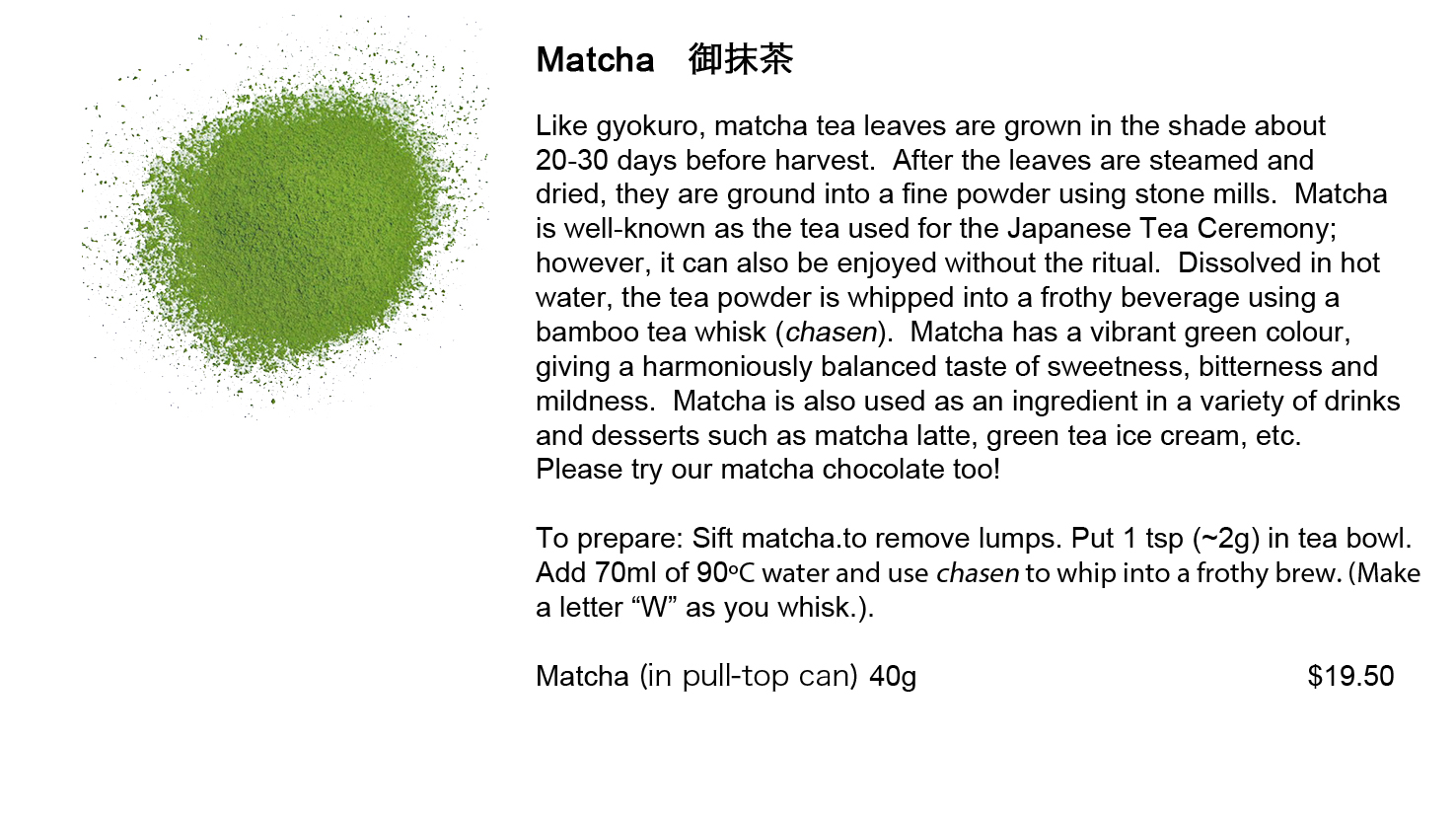japanese green tea
The earliest reference to tea in Japan was from the early 9th century when Buddhist monks brought tea from China. However, it was only later in 1191, when the famous Zen monk, Myōan Eisai (1141-1215), brought tea seeds from China to be planted in Kyoto, that tea cultivation earnestly began in Japan. Twenty years later, in 1211, his book Kissa no Yōjōki ("Treatise on Tea Drinking for Health") popularized tea consumption to the samurai class. Japanese tea culture developed over the centuries. It was in the Muromachi period (1392-1573) when Zen Buddhism was embraced by the warrior class, that chado ("The Way of Tea") flourished.
The modern Japanese tea (sencha) as we know it today was developed only in 1738 in Uji, Kyoto, when Nagatani Sōen (1681-1778) introduced a new process of steaming, drying and hand kneading & rolling to obtain loose tea leaves. Prior to this, Japanese tea had been pan-roasted. Since then, the Uji region in Kyoto, with its lush, rolling hills and nutrient-rich soil, earned its reputation as producing the best tea in Japan. Though much sought after, Uji tea represents only 3-5% of all Japanese tea.
All our green tea are shipped directly to Halifax from the tea farm in Uji, Kyoto, Japan. You can purchase here.









